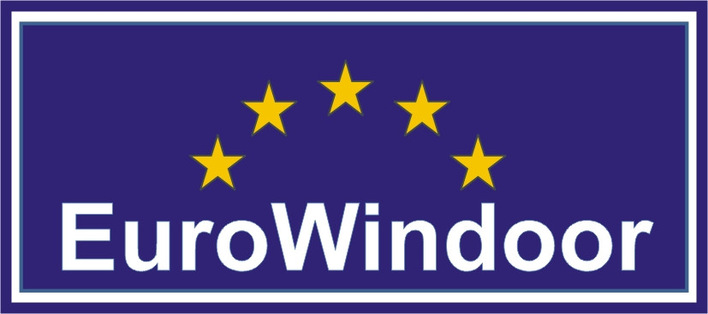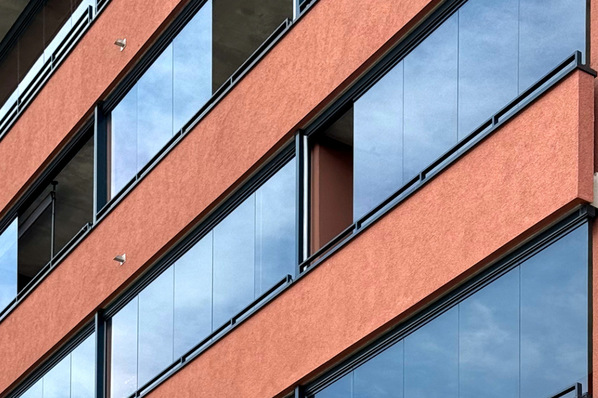Every year, many thousands of birds collide with glass facades and die. This is because large glass surfaces can be fatal for birds, as the glass either reflects the landscape or allows it to shine through, thus simulating a free flight path or an attractive target for the animals.
Glued-on bird silhouettes have proven to be completely ineffective in this context. Environmentalists and bird lovers have been drawing attention to the problem for years. Nevertheless, the dangers of bird strike are unfortunately often not given sufficient consideration when planning glass facades. The project consultants of the Flachglas MarkenKreis help to tackle this problem already in the planning phase and present suitable products for bird strike prevention.
Who is responsible for bird protection on buildings?
Bird protection is in the hands of cities and municipalities. They are obliged to check and reduce the risk of bird strike on buildings within the framework of nature conservation regulations. Accordingly, architects and planners are increasingly confronted with this issue when planning new buildings.
Michael Scheer, Managing Director at Flachglas MarkenKreis, comments: "We are noticing that bird protection is becoming increasingly important in the context of our consulting activities. Particularly when planning transparent, large-scale glass facades, we work together with architects to examine economical, feasible solutions in advance to prevent bird strikes. And they don't necessarily have to be complicated, there are effective simple measures."
See also: How bird protection glass works
The municipality's ornithological assessor's report as well as recommendations of the Länderarbeitsgemeinschaft der Vogelschutzwarten VSW (LAG VSW) 2021, the Swiss ornithological station Sempach and BUND NRW provide orientation points for the consultation.
"Basically, bird-friendly glass is always about two important aspects - making the glass visible and avoiding large-scale mirror images or a combination of both. In addition, new products with UV markings are available. To find the ideal glass, a site-specific ornithological assessor should ideally be obtained in advance, describing the product requirements for bird protection of the associated authority," Scheer further explains. "Our consultations are then based on these recommendations."
What bird-friendly glass does
The high transmission of glass is a major cause of bird collisions. In these cases, the LAG-VSW recommends reliably effective markings on the glass and refers to the results of extensively conducted flight tunnel tests by the Vienna Environmental Ombudsman's Office (2021). Markings are intended to make transparent glass panes visible to birds in such a way that they can perceive them as obstacles.
The simplest possibility of effective marking is a stripe or dot pattern applied horizontally or vertically to a glass pane. Irregular patterns are possible here and open up great creative scope.
Did you miss this? Where design glass meets sun protection
Flachglas Wernberg and Flachglas Nord-Ost offer extensive possibilities for printing on glass and also have bird-friendly designs in their sample catalogues. It is important to note how the glass is printed. Markings must be made in certain dimensions and distances, and the distances must be coordinated so that birds do not try to fly through them.
The LAG-VSW provides recommendations in this regard. "The colour of the printing and the position on the glass pane also play a role," adds project consultant Frank Horstmann from Flachglas MarkenKreis. "A high contrast is important for the perceptibility of the pattern.
Black prints on the impact side have proven successful. Since the printing is done with ceramic inks, which are particularly durable and resistant, the printing can also be done on the weather side. Interior prints should rather be kept very light in order to be perceived as an obstacle by birds due to the reflection of the outer glass pane."
No large-area reflections
Highly reflective insulating glass creates reflections in almost every situation and therefore poses an increased risk of unwanted bird strikes. The LAG-VSW therefore recommends using glass with the lowest possible external reflection.
The Swiss Ornithological Institute states a maximum external reflection of 15 % as a concrete limit value, which is often a problem with triple-glazed insulating glass.
Flachglas MarkenKreis offers several low-reflection glass types in the area of sun shading insulating glass. "Infrastop III Neutral 63/39 and Brillant 54/30, with RL values of 12 % and 14 % respectively, have already proven themselves as bird-friendly glazing in many buildings," explains Horstmann.
"And with the new Infrastop Q product range, we are expanding our range to include three more glasses with remarkable reflection values of 9 - 12 %. When using low-reflection glass, however, it is important to ensure that no new danger areas are created. Glazed corner areas are critical: Views through them should be avoided by appropriate interior design," Horstmann continues.
The LAG-VSW actually goes one step further. It recommends that even weakly reflective glass panes be additionally marked to avoid bird collisions.
UV-marked coatings for facade glass
Markings on window panes and office buildings are not considered equally attractive by building owners. For this reason, markings have been developed as a further alternative which alter the transmission and reflection of the glass predominantly in the ultraviolet (UV) range. Flachglas MarkenKreis offers Pilkington AviSafe and Ornilux mikado and design in this segment.
Also interesting: European Commission promises ‘targeted support’ for the glass industry
The basic function of these glasses is based on the fact that, according to the manufacturers, many birds - unlike humans - see light in the ultraviolet spectrum. The glasses have a patterned UV-enhanced coating that causes the bird to perceive a barrier. The UV coating applied to the outside of the glazing, on the other hand, is only angle-dependent for humans and can only be seen on close inspection.













